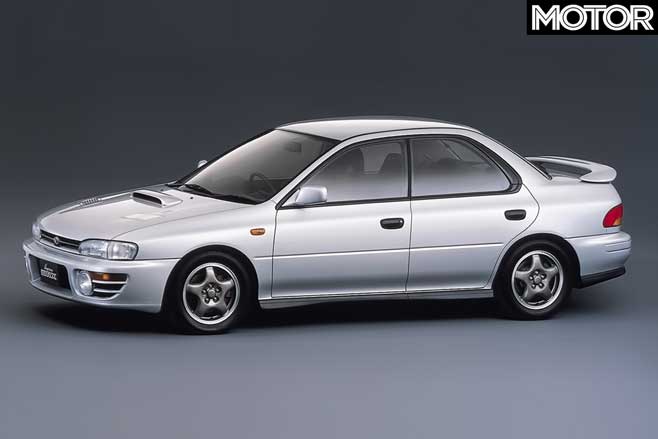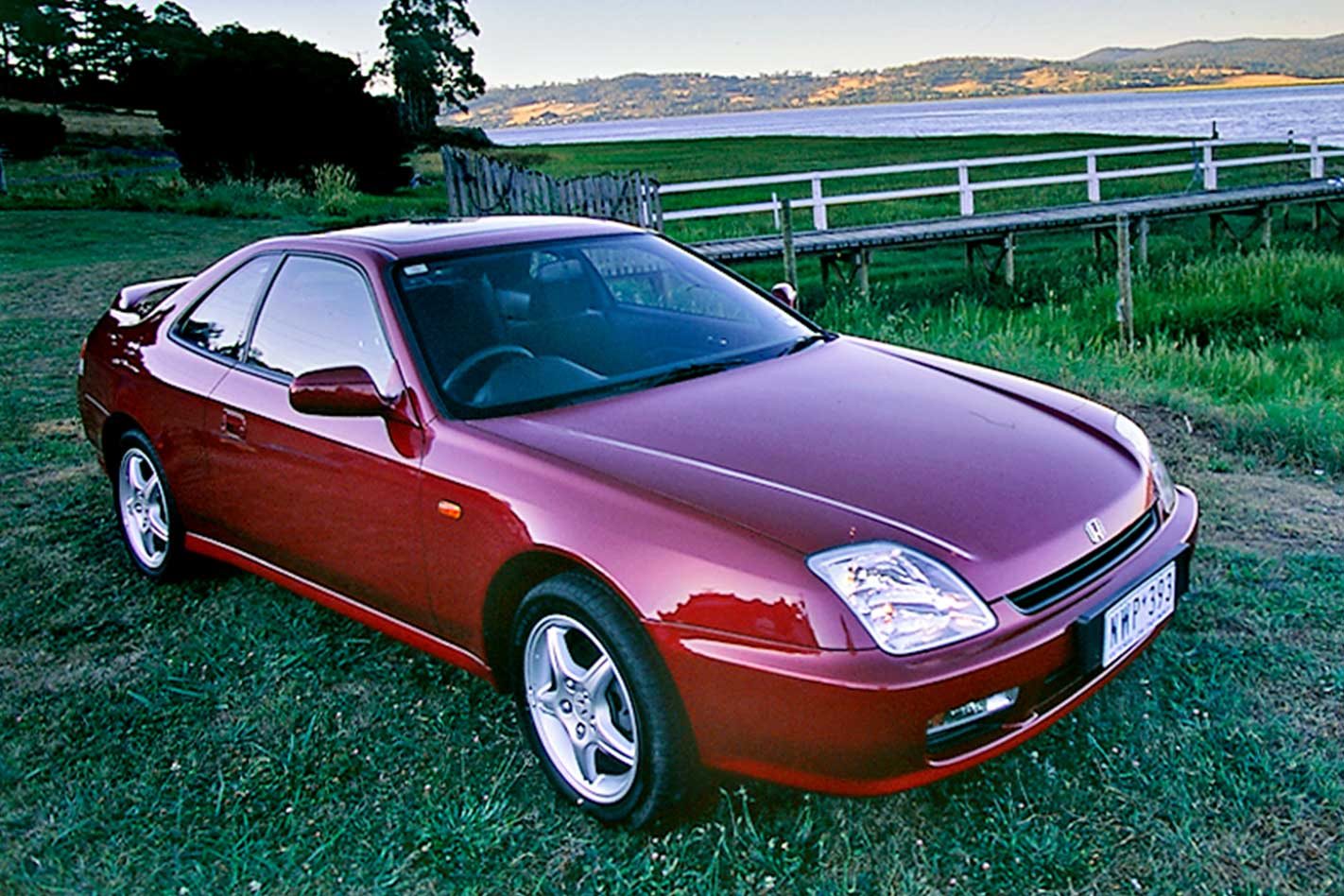Ever wondered why the sporty coupe market is such a tough nut to crack? Two words: Toyota Celica and Honda Prelude.
This feature was originally published in MOTOR’s March 2007 issue
Between them, the Toyota and Honda two-doors have kept pretty much everybody else at arm’s length when it comes to capturing the hearts and minds (but mainly the wallets) of hairdressers and bank tellers across this wide, brown land.
Both cars have gone through their highs and lows, the Celica arguably having had more of the latter than it deserved. The Prelude’s duff moments, on the other hand, have been much rarer and apart from a brief flirtation with the technological blind-alley that was four-wheel-steering, the Prelude has generally covered itself in glory.
Okay, it was never a hard-core sportster (Honda always had other models for that), but it has always represented a well-built, sporty little number that is also surprisingly easy to live with day-to-day. And if you listen to Honda’s tech-heads, the Prelude was always the first to try out new technology before it filtered down to lesser models or, like four-wheel-steering, was hit over the head with a cricket bat.
Makes you wonder what Honda was trying to tell us by dumping the Prelude in 2001. The final 58 cars trickled out the door in ’02.
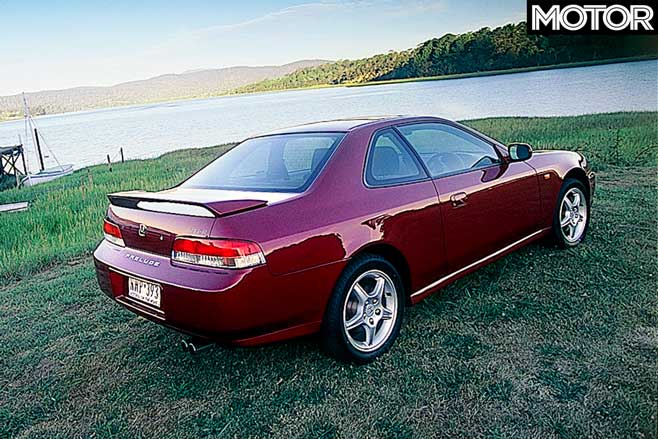
Anyway, that’s pretty much how the final version of the Prelude, the fifth generation in case you were wondering, came to have the rather effective ATTS (Active Torque Transfer System) diff in its range-topping version. Not only was the tricky diff dead set ‘manna from heaven’ for the marketing blokes, it was also some kind of cure for the understeer blues that afflicts many a pokey front-driver.
Pokey, you say? Well, yeah actually, and while whole generations of cars like the Prelude have been more style than substance, in its trickest form, the final Prelude was, in fact, a strong performer (0-100 in high 7s, 400m in mid 15s). What you had to do, however, was steer clear of the base Si with its 118kW version of Honda’s 2.2-litre DOHC four-banger, and opt for either the VTi-R or VTi-R ATTS variants.
Either of those models put you into a Prelude with more or less the same engine, but with the then-unqualified benefit of Honda’s now legendary V-TEC variable valve-timing-and-lift technology.
The end result was a rather stirring 143kW, which rose to 147 following a mild update in November ’98, almost two years after the initial launch. And while stirring might have covered it below the point at which V-TEC kicked in (about 5200rpm), the Prelude fair dinkum got the wrinkles out when you pushed it all the way to its 7750rpm cut-out.
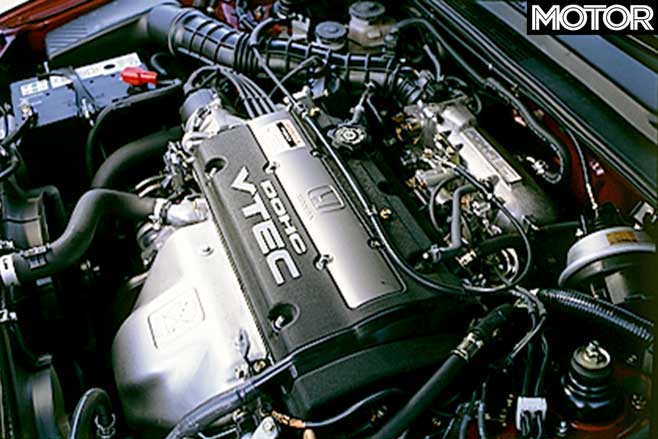
As well as all that, the engine was a classic Honda powerplant by being refined and smooth, yet still managing to feel exciting. Even today, very few four-cylinder engines are as richly rewarding as the Prelude’s. Obviously, a manual-transmission version is the only way to go, but you’d be amazed at how many lame ducks opted for the four-speed auto.
But to hell with them, because unless you were prepared to shift your own gears, you couldn’t get the ATTS package which was restricted to the five-speed manual VTi-R only.
The theory behind the ATTS diff was the same as for any slippery diff – to send the most torque to the corner with the most grip. But instead of conventional clutches and such, the ATTS used an on-board computer to study driver inputs and tailor to torque distribution. The plan was that instead of waiting for the diff to react to what the wheels were telling it, ATTS could figure what was about to happen from how fast the driver’s arms were flailing and how dilated his pupils were, and make an educated guess on which side to send the bulk of the twist. Clever.
In actual fact, the ATTS only really comes into its own when you’re having a red-hot go, usually a race-track at that. Pootling around never really reveals the genius of the set-up, but then neither does it give you much of a clue about what a tiger of an engine the V-TEC mill is.
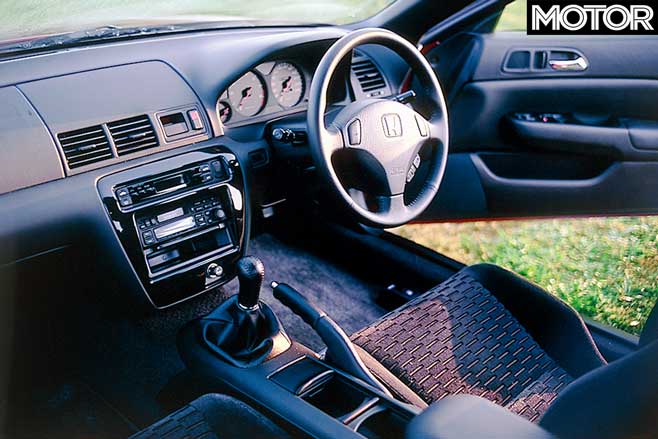
All of which raises the spectre of what’s it all good for if the thing is only ever driven by folks who wouldn’t know an apex from their elbow? It’s a valid question, too, and if it wasn’t, how come Honda managed to sell so many of the non-ATTS, non-V-TEC airhead version? Not that any of this should worry you if you think a hot-shot Prelude is for you. Because scrape away the cultural baggage of cars with a similar image and you will uncover a proper piece of kit.
Watch out for cars that have been seriously modified under the bonnet. We wouldn’t have a cow if we found one with a bigger exhaust tip and maybe a cold-air box, but a Prelude running any kind of huffer or other serious mods would be definite cause for concern. Same goes for lowered suspension. Why pay for a previous owner to have stuffed up all Honda’s good work?
Oh, and if you answer a classified ad to find that the car in question is sporting one of those ghastly, plastic, Darth Vader body kits, just smack the goose in the chops for me, will you. That is all.
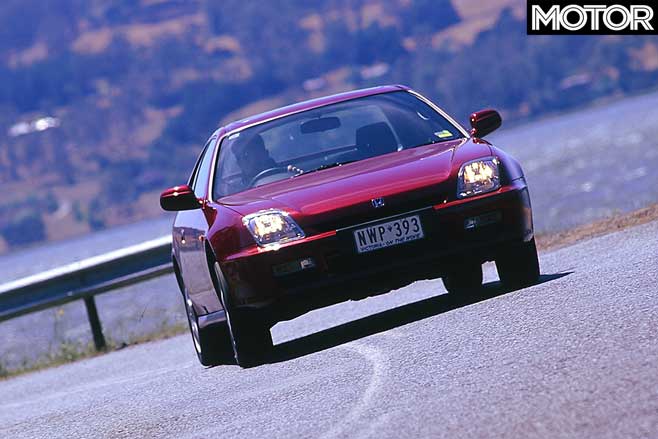
FAST FACTS 2001 Honda Prelude VTi-R ATTS ENGINE: 2159cc 4cyl, DOHC, 16v POWER: 147kW @ 7000rpm TORQUE: 212Nm @ 5250rpm WEIGHT: 1305kg POWER-TO- WEIGHT: 113kW/tonne TRANSMISSION: 5-speed manual SUSPENSION: double A-arms, coil springs, anti roll bar (f & r) L/W/h: 4545/1750/1315mm WHEELBASE: 2585mm BRAKES: ventilated discs (f), solid discs (r), ABS WHEELS: 16 x 6.5-inch alloy TYRES: Yokohama Advan 205/50R16 PRICE: $50,209 (‘01 VTi-R ATTS)
What we said
“The way the Prelude drove out of tight corners was more like a four-wheel driver. It was possible to accelerate early and hard, confident the Honda wouldn’t squander its power with untidy, front-tyre scrubbing understeer. Probably one of the most neutral of the the whole lot.” – Cameron McConville, nine-car definitive handling test, September 1998
Other Hot Coupes
1994 Toyota Celica GT-Four $18,500 – $22,900 (5sp manual) While the cooking-model Celica of this era was just dead ordinary, the 178kW GT-Four was a mover. Still not really as good as it should have been. Just off the pace generally. And expensive (it cost $82K new).
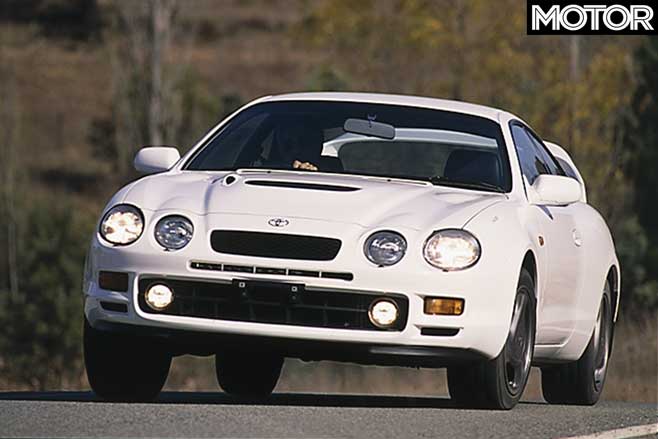
2000 Honda Integra Type-R $14,800 – $18,900 (5sp manual) If you really want to see how a front-drive chassis should work, Honda’s brilliant ‘99-’01 141kW Type-R is the way to find out. Live with one and you’ll also learn valuable lessons about noise, harshness and police. Priceless.
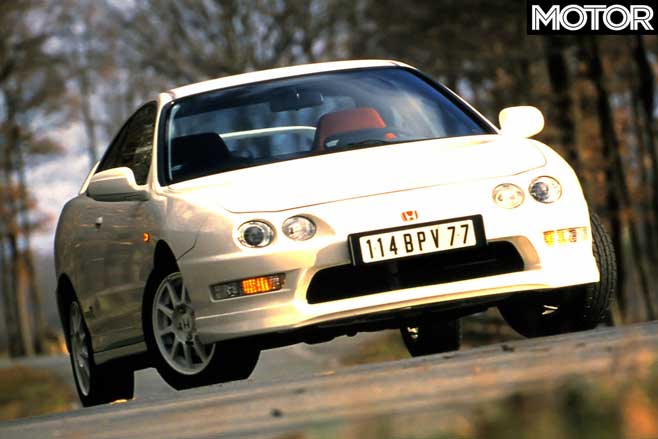
1997 Holden Calibra Turbo $6900 – $9600 (6sp manual) Cheap now that everybody has forgotten about them, the Calibra was a hell of a looker, then and now. Try to find a late-model (95-97) all-wheel-drive with the 150kW Turbo engine. Forget the rest, especially any automatic version.
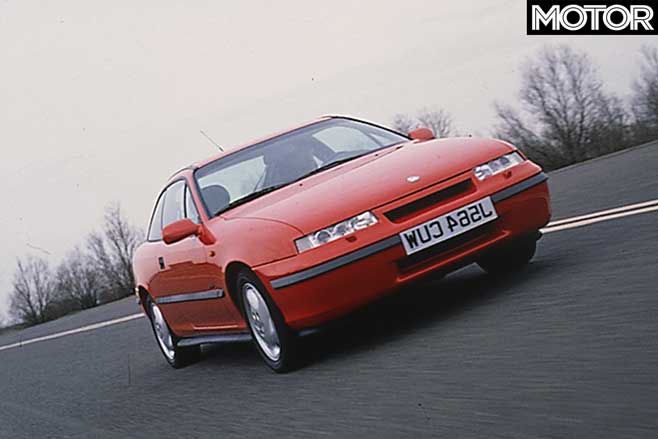
2000 Subaru impreza WRX $17,800 – $21,100 (5sp manual) Something from left-field, Sir? Then why not a Rex. For similar money to a Prelude you’ll be buying the last of the first shape which was also lighter and faster than the boggly-eyed one that replaced it in October 2000. Just don’t buy one from a skateboard punk rocker.
